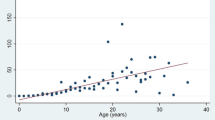Abstract
The purpose of this study is to scrutinize and characterize the dynamic evolution of involuntary knowledge spillover (patent citations among companies) and voluntary knowledge spillover (companies as joint owners/co-assignees) in the semiconductor industry. Analyzing US-issued patents divided into three eras (six-inch with precedent, eight-inch, and twelve-inch chip), this study discovers that the patent growth of this industry is significant during the period from 1997 to 2004. The “Core Actor” includes seven assignees such as AMD, IBM, INTEL, Micron Technology, Samsung Electronics, TSMC Taiwan, Toshiba with higher knowledge in/out flow in both eight-inch and twelve-inch eras. Among the 11 company clusters formed by co-assignees with voluntary knowledge spillover over eight- and twelve-inch eras, nine clusters belong to Japanese companies. This suggests that in this industry, Japanese companies present a closer relationship. The voluntary knowledge–flow relationships refer to the relationships de facto and they could be used to monitor technological knowledge relationship among competitors. In addition, the potential technology R&D partner could be selected as a chance of cooperation through the process of referencing involuntary knowledge–flow network which indicates technology overlaps among companies.







Similar content being viewed by others
References
Branstetter L (2001) Are knowledge spillovers international or intranational in scope? Microeconometric evidence from the US and Japan. Journal of International Economics 53(1):53–79
Burt, RS (1992) The social structure of competition. In: Nohria N, Eccles RG (eds) Networks and Organizations. Harvard Business School Press, Boston, MA, pp 57–91
Coe DT, Helpman E (1995) International R&D spillovers. European Economic Review 39(5):859–887
Deng Y (2008) The value of knowledge spillovers in the U.S. semiconductor industry. International Journal of Industrial Organization 26(4):1044–1058
Escribano A, Fosfuri A, Tribó JA (2009) Managing external knowledge flows: the moderating role of absorptive capacity. Research Policy 38(1):96–105
Freeman LC (1979) Centrality in networks: I. conceptual clarification. Social Networks 1:215–239
Granovetter MS (1973) The strength of weak ties. Am J Sociol 78(6):1360–1380
Griffith R, Lee S, Reenen JV (2007) Is distance dying at last? Falling home bias in fixed effects models of patent citations, NBER Working Paper, No, 13338
Griliches Z (1990) Patent statistics as economic indicators: a survey. Journal of Economic Literature 28(4):1661–1707
Hagedoorn J (2003) Sharing intellectual property rights—an exploratory study of joint patenting amongst companies. Industrial and Corporate Change 12(5):1035–1050
Hertzfeld HR, Link AN, Vonortas NS (2006) Intellectual property protection mechanisms in research partnerships. Research Policy 35(6):825–838
Hoang H, Antoncic B (2003) Network-based research in entrepreneurship: a critical review. Journal of Business Venturing 18(2):165–187
Holland PW, Leinhardt S (1971) Transitivity in structural models of small groups. Comparative Group Studies 2:107–124
Jaffe AB, Lerner J (2001) Reinventing public R&D: patent policy and the commercialization of national laboratory technologies. Rand J Econ 32(1):167–199
Jaffe AB, Trajtenberg M, Fogarty MS (2000) Knowledge spillovers and patent citations: evidence from a survey of inventors. Am Econ Rev 90(2):215–218
Jaffe AB, Trajtenberg M, Henderson R (1993) Geographic localization of knowledge spillovers as evidenced by patent citations. Quarterly Journal of Economics 108(3):577–598
Jaffe AB, Trajtenberg M, Romer PM (2005) Patents, citations, and innovations: a window on the knowledge economy. MIT Press, Boston
Keller W (1998) Are international R&D spillovers trade-related? Analyzing spillovers among randomly matched trade partners. European Economic Review 42(8):1469–1481
Li YT, Huang MH, Chen DZ (2011) Semiconductor industry value chain-characters’ technology evolution. Industrial Management & Data Systems 111(3):370–390
Scherer FM (1982) Inter-industry technology flows in the United States. Research Policy 11(4):227–245
Seidman SB, Foster BL (1978) A graph–theoretic generalization of the clique concept. The Journal of Mathematical Sociology 6(1):139–154
Tracy D (2010) Semiconductor equipment and materials outlook. SEMICON Singapore, Singapore
USPTO (2008). 35 U. S. C. 262 Joint owners. http://www.uspto.gov/web/offices/pac/mpep/documents/0300_301.htm. Accessed 15 Sept 2010.
Verspagen B, De Loo I (1999) Technology spillovers between sectors and over time. Technological Forecasting and Social Change 60(3):215–235
Von Wartburg I, Teichert T, Rost K (2005) Inventive progress measured by multi-stage patent citation analysis. Research Policy 34(10):1591–1607
Author information
Authors and Affiliations
Corresponding author
Rights and permissions
About this article
Cite this article
Wang, Cc., Huang, Mh. & Chen, Dz. The Evolution of Knowledge Spillover and Company cluster in Semiconductor Industry. J Knowl Econ 3, 109–124 (2012). https://doi.org/10.1007/s13132-011-0080-5
Received:
Accepted:
Published:
Issue Date:
DOI: https://doi.org/10.1007/s13132-011-0080-5




